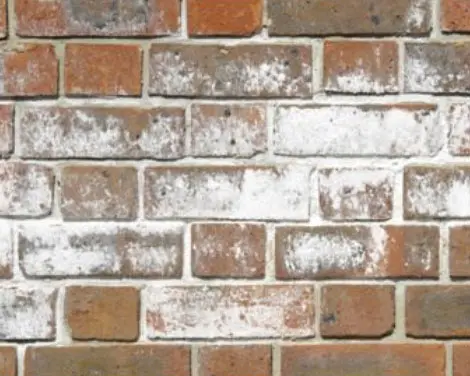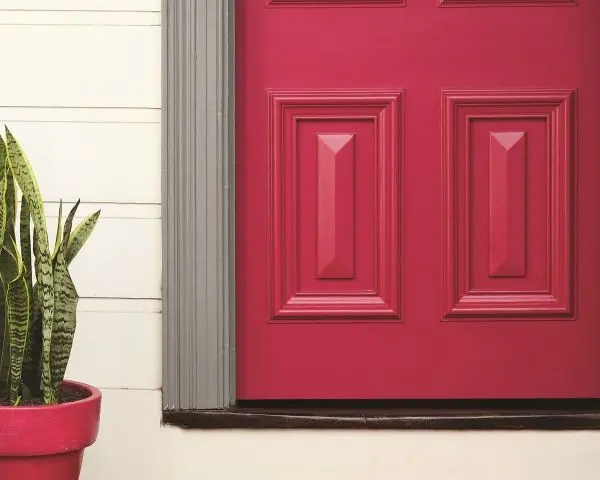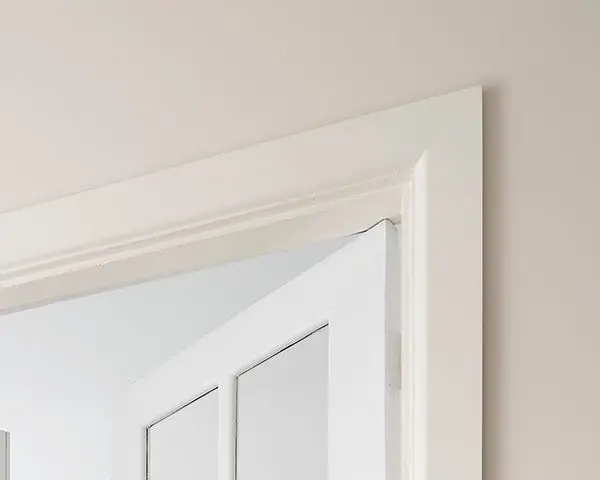What is back-rolling?
“Back-rolling” is the term most often used in the paint industry to describe the manual process of dryrolling the freshly painted surface with a short to medium nap synthetic roller, immediately following the spray application of water based paints onto walls and ceilings, whilst the paint is still wet.
Why?
The process of back-rolling after spraying should be carried out as standard practice, especially when new plasterboard surfaces are involved for three specific reasons:
Texture
The roller imparts a uniform but soft texture onto the freshly sprayed surface. This texture will scatter the light more uniformly and will therefore effectively help to disguise or hide surface flatness variations, small surface imperfections or any other blemish or surface defect that may still be present after the preparation stage.
Adhesion
The roller will work the paint into the surface and will therefore assist in promoting maximum adhesion of each coat to the previous layer. The paper surface on new plasterboard already has a slight texture that provides an anchor for the paint to adhere to.
Surface variations
Rolling the surface helps to flatten any raised nap or paper fibres on new plasterboard that may have been created when the plasterer sanded off the set joints.
The plasterboard manufacturers have advocated the process of back-rolling since the use of spray application methods became common practice.
How does it occur?
Selecting the correct product and finish as part of the overall coating system is not a difficult task as the industry guidelines are clearly outlined within AS/NZS 2311 “The Painting of Buildings”
Generally, broadwall surfaces are painted with water-based coatings applied by brush, roller or spray depending on access restrictions, surface area and product type.
Brushing is the most effective method for cutting-in and for small inaccessible areas. However backrolling these areas with a touch-up roller will deliver a desirable soft textured surface that is free of brush marks.
Spray application of ceilings and walls is becoming more popular due to the cost effectiveness of this application method. However spray alone will deliver a very smooth finish that tends to reflect more light thereby accentuating substrate variations and highlighting surface imperfections or blemishes. Back-rolling a freshly spray painted surface will eliminate the smooth finish and provide better light scattering conditions.
Solution
All preparation work and painting should be carried out in accordance with AS/NZS 2311: “Guide to the Painting of Buildings”.
Strict conformance to the paint manufacturers’ recommendations regarding the use of their products should provide all the assistance needed to achieve a successful outcome. Specific information regarding application parameters can be found in the relevant “Product Data Sheet” (PDS).
The first coat applied to the bare (unpainted) surface should be a good quality prepcoat that is suitable for that particular substrate. Whilst sanding the prepcoat is highly desirable, ceilings are often not sanded unless it is high end work. Walls should always be lightly sanded prior to topcoating.
If the prepcoat is being applied by spray and is not going to be sanded, back-rolling the prepcoat should be carried out whilst the paint is still wet. Imparting a uniform soft texture from a roller at this stage is very important.
If the spray applied prepcoat is to be sanded, back-rolling each subsequent coat after the prepcoat is the best practice to achieve a uniform appearance.
The finish coats can be applied by either roller or spray, nevertheless back-rolling the spray applied coats will always deliver the best overall appearance and outcome.
Prevention
Painters who choose not to back-roll following a spray application risk facing difficulty with repair and touch-up.
An indistinguishable touch-up will be difficult to achieve on a smooth non-textured surface if no back-rolling is carried out. In fact touch-ups on low sheen or satin finishes will be so difficult that it is normally recommended that the whole area in need of repair be recoated completely to maximise the appearance of the paint finish.
The recommended system when painting new plasterboard is:
A high quality water-based acrylic sealer undercoat (ASU) followed by two full coats of water- based acrylic topcoat. The sheen level on ceilings should be flat and on walls should be matt or low sheen (low traffic areas) or satin / semi-gloss in high traffic or wet areas.
As a minimum, the first coat (ASU) on ceilings should always be back-rolled after spray application, unless ceilings are to be sanded.
The back-rolling of subsequent coats is highly desirable as it enhances the uniform soft texture and light scattering capability.
Note: Many painters use extensions on spray guns to paint ceilings. A common problem is ‘spitting’ from the end of an extension. This can easily be avoided by using either a “Graco® Clean Shot Valve” or “Wagner® Anti Spit Valve” on the end of any length spray gun extension. Refer to manufacturer's technical literature.
References
Further information on this topic can be found in the AS/NZS 2311 “Guide to the Painting of Buildings”
Additional information can be obtained from the Master Painters Association via Phone: 04 472 5870 or email: training@masterpainters.org.nz
More paint problem solutions
Efflorescence is the deposit of crusty white mineral salts that appear on a masonry surface such as concrete, render, brick or mortar.
Discover how to touch up a small area of a newly painted surface to conceal repairs to minor damage or to cover up small surface defects.
Discover the differences between water-based and oil-based enamel paints.
All water-based paints undergo a “drying process” involving two distinct phases, evaporation and coalescence.
Get detailed information about the physical and chemical properties of our products.
Advice for those challenges that arise in your busy and varied days.
Browse Dulux specifications, product datasheets, substrate information and safety data sheets.



